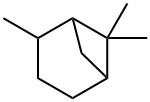2 4′-Dichlorobenzophenone(CAS# 85-29-0)
| Risk Codes | R36/37/38 – Irritating to eyes, respiratory system and skin. R38 – Irritating to the skin R37 – Irritating to the respiratory system R36 – Irritating to the eyes |
| Safety Description | S26 – In case of contact with eyes, rinse immediately with plenty of water and seek medical advice. S36/37/39 – Wear suitable protective clothing, gloves and eye/face protection. S37 – Wear suitable gloves. |
| TSCA | Yes |
| HS Code | 29143990 |
Introduction
2,4′-Dichlorobenzophenone (also known as Dichlorodiphenylketone) is an organic compound. Here are some of the compound’s properties, uses, preparation methods, and safety information:
Quality:
- Appearance: 2,4′-Dichlorobenzophenone is a colorless crystal or white crystalline powder.
- Solubility: 2,4′-dichlorobenzophenone is soluble in organic solvents such as ethanol and dimethylformamide.
Use:
2,4′-Dichlorobenzophenone has important applications in organic synthesis:
- As a catalyst: it can be used for a variety of organic reactions, such as reduction, oxidation, amide and dehydration reactions.
- As an intermediate: It can be used as an important intermediate in the synthesis of other compounds.
- As an organic material: it can be used to prepare photosensitive materials, fluorescent dyes and polymers.
Method:
2,4′-Dichlorobenzophenone is usually prepared by the reaction of dichlorobenzophenone with chloroacetic acid. There are different varieties of specific preparation methods, including solvent reaction method, solid phase synthesis method and gas phase synthesis method.
Safety Information:
2,4′-Dichlorobenzophenone is less toxic but should still be approached with caution:
- As a chemical, direct contact with the skin, eyes, and inhalation of its dust should be avoided.
- Good ventilation measures should be taken during operation to prevent the inhalation of vapors and dust.
- In case of accidental ingestion or inhalation, consult a doctor and consult a professional.








